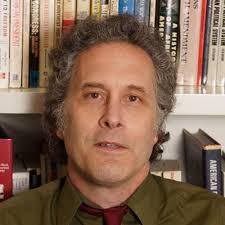Inspirational Stories
James
acute myeloid leukemia (AML)
My symptoms began in May 2017. I was having shortness of breath while climbing stairs and jogging up even the smallest of inclines. I chalked my windedness to age; I was fifty-seven. And I told myself that I was tired after teaching a hectic school year.
However, by July, I knew I should get the symptoms checked out, and my GP sent me to a cardiologist. She said my heart sounded fine but sent me for tests. Before I was tested, however, my GP, who’d taken blood, called to tell me to get to an emergency room ASAP. My blood counts were extremely low, in particular my WBC which made me susceptible to serious illness.
In the emergency room at Columbia Presbyterian Hospital in New York where I arrived at around 9:00 p.m., I was told that I either had anemia or leukemia. The blood results arrived in the early morning: I had acute myeloid leukemia (AML) and would be spending the next month in the hospital getting treated. As I was pushed on a gurney up to the oncology hematology floor, I felt as if I were in a bad dream. Even worse, there was no immediate bed for me, and I was put into a hallway cubicle with no privacy. But I had hope. On my gurney ride, a nurse had told me, “You’re going to love Dr. Nicole Lamana.”
Things changed the moment I met her. She was warm, funny, and, most importantly, confident. We talked about our Italian heritage. By afternoon, I was in a room and talking about treatment. AML was clearly explained to me, as well as the course of chemotherapy. I was told, gently, that I should not expect to return to teaching for the fall (though I think they knew I’d be out all year, which I was). My wife and I asked a lot of questions which were answered adequately, and to my question about survival rates, Dr. Lamana said, “Don’t even go there. It’ll be a black hole. Just focus on your health, and take it one day at a time.”
I followed her advice and not once looked at my chances.
The first night I wept and got it out of my system. I am a religious person, and my next step was to ask, “What can I do to occupy myself and make my life and the lives of my caregivers better?” After all, it couldn’t have been easy for aides, nurses, doctors, and everyone else to continually face people with such a serious condition. So, a former journalist, I asked them questions about themselves. I told them stories about my crazy family from a passel full of them.
I developed a routine. After breakfast and the morning visit by the doctor and his worshipful group of interns, I took off for the building’s lobby where I had coffee in a café and read or wrote. After this, it was 11:30 a.m., time for lunch, and then a nap. When I arose at 3:00 p.m., I walked and walked and walked on my floor, across a 9th-story walkway, and into the next building. I pushed myself but not too much.
My first treatment ended in late August, and I learned that the cancer was in remission. But now I had at least three more brutal treatments over the coming six months. I did not suffer from nausea as much as queasiness. The charming and sassy Jamaican staffers who delivered my meals gave me disappointing looks when I didn’t clean my plate. So as not to disappointment, I ate what little I could and dumped the rest of the meal in a trash can, covering it over with paper towels. The women would arrive to proclaim, “James, you ate so well today!” Well, all I can say is that white lies make the world work.
I returned for three more treatments. The protocol was that I’d get my chemo and return home, trying as best as I could to stay healthy while my counts rose. However, each time I got a low fever and had to return to Columbia Pres, sitting around for three weeks until my blood counts rose to safe levels.
Some days were hell, especially weekends when the hospital floor was quieter than usual. I did not so much think about mortality because I was told that if the cancer returned, I was a candidate for a bone marrow transplant. I was told the process was no picnic, so, as with my survival rate, I didn’t look deeply into what the process entailed. One day at a time. That’s what kept me going.
If you survey the world around you, you’ll find time goes faster. On one of my visits, while getting a chest CAT scan, I met a real-life mobster whom crime boss John Gotti had tried to whack decades earlier (shot five times). What a conversation that was! He was a former boxer and art fencer. The guy was for real, too. He had a Wikipedia page. I also shared a room with an esteemed Jewish rebbe whose young male and female students were so dedicated to him that one was with him round the clock, sleeping in chairs at night. After the Jewish sabbath ended one evening, half of Brooklyn flowed into the room to bid him well.
My last treatment was in March 2018. I was told that I was very fortunate. Given the genetic makeup of my leukemia, my body responded well to the chemo. That fall, I moved to California to care for my elderly parents and was under the care of doctors at Stanford University. In 2023, my case was closed, and I sent Dr. Lamana and her staff the biggest box of Grandma See’s chocolates money can buy ― a pittance for a group of dedicated people who saved my life.
